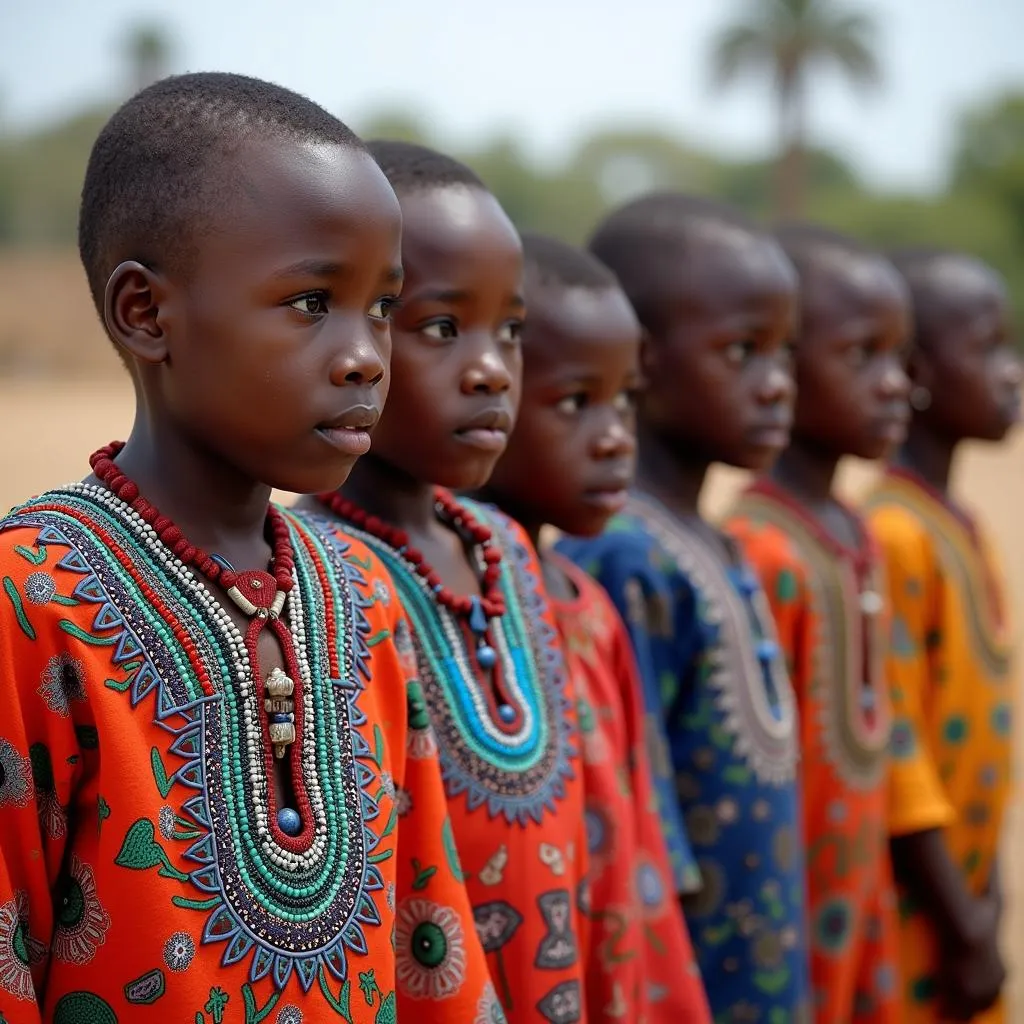Unleash Your Creativity with African Fonts: A Free Resource Guide
African fonts are becoming increasingly popular for designers and creators looking to add a unique and vibrant touch to their projects. Whether you’re designing logos, branding materials, or simply looking to explore the rich visual heritage of Africa, these fonts offer a captivating way to express your ideas. But with so many options available, finding the perfect free African font can seem overwhelming.
This guide will explore the world of African fonts, covering everything from their history and inspiration to practical tips for using them effectively. We’ll dive into popular categories, provide examples of remarkable fonts, and share valuable resources where you can find these beautiful typefaces for free.
The Beauty and Versatility of African Fonts
African fonts are more than just visually appealing; they’re windows into a rich cultural heritage. Each font reflects the unique artistry and design principles of various African regions, drawing inspiration from traditional art forms, languages, and symbols. From the bold geometric patterns of West African textiles to the elegant calligraphic scripts of North Africa, these fonts offer an endless spectrum of aesthetic possibilities.
Exploring Different Categories of African Fonts
While all African fonts share a common thread of cultural inspiration, they encompass diverse styles and functionalities. Here are some of the most popular categories to consider:
1. Traditional African Fonts
These fonts draw directly from traditional art forms and symbols found throughout the continent. Examples include:
- Adinkra Fonts: Inspired by the Adinkra symbols of Ghana, these fonts often feature intricate geometric patterns and represent proverbs, concepts, and beliefs.
- Nsibidi Fonts: Originating from the Igbo people of Nigeria, Nsibidi fonts use a system of pictographs and ideograms to convey complex ideas.
2. Calligraphic African Fonts
These fonts are inspired by the art of calligraphy, often featuring flowing lines, elegant curves, and intricate details. Examples include:
- Kufic Fonts: This Arabic calligraphic style, originating in Kufa, Iraq, is characterized by its angular shapes and geometric patterns.
- Naskh Fonts: A more flowing and cursive Arabic calligraphic style, Naskh fonts are often used in religious texts and decorative works.
3. Modern African Fonts
These fonts blend traditional elements with modern design aesthetics, resulting in contemporary and versatile typefaces. Examples include:
- Geometric African Fonts: These fonts feature bold, clean lines and geometric shapes, often inspired by traditional African architecture and patterns.
- Sans-serif African Fonts: These fonts offer a clean and modern look, perfect for branding, websites, and other digital applications.
Finding Free African Fonts: Your Ultimate Resource Guide
Now that you’ve gained an appreciation for the diverse world of African fonts, let’s delve into the exciting realm of free resources:
1. Google Fonts: A vast library of free fonts, Google Fonts features a dedicated section for African fonts, including both traditional and contemporary designs.
2. FontSpace: This website hosts a curated collection of free fonts from various designers around the world. You can browse their extensive library and filter by style, including African fonts.
3. Dafont: Dafont is a popular online font repository offering a wide range of free fonts, including a dedicated category for African fonts.
4. Creative Fabrica: This platform offers a vast selection of free and premium fonts, graphics, and design assets. It’s a treasure trove for creative professionals looking for unique African font options.
5. Font Meme: This website features a comprehensive collection of font information, including a dedicated section for African fonts, where you can explore various styles and find free downloadable resources.
Tips for Using African Fonts Effectively
- Consider the Context: Choose fonts that align with the overall tone and message of your project. For example, a bold geometric font might be suitable for a modern brand, while a calligraphic font might be better for a more traditional or artistic project.
- Experiment with Pairings: Don’t be afraid to experiment with pairing African fonts with other typefaces. A minimalist sans-serif font can complement a bolder African font, creating visual balance and contrast.
- Use with Caution: Avoid using too many African fonts in one project. Keep it simple and focus on a few key elements to ensure a visually cohesive design.
- Respect Cultural Significance: Always approach African fonts with respect and sensitivity. Be mindful of the cultural context and avoid appropriating or misrepresenting traditional elements.
Conclusion
Unlocking the world of African fonts opens doors to a wealth of artistic possibilities. From their historical significance to their modern versatility, these fonts provide a unique and captivating way to express your creativity. By embracing the diverse styles and exploring free resources, you can bring a touch of African heritage to your designs, celebrating the beauty and richness of this vibrant continent.
Remember: Always respect the cultural context and use fonts thoughtfully, ensuring they enhance your message and add depth to your creations.

